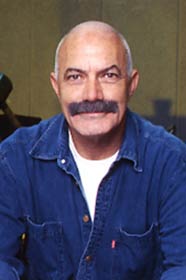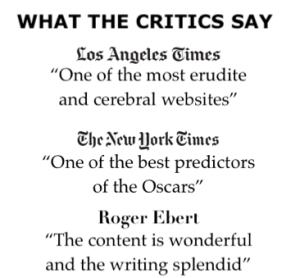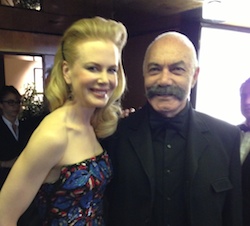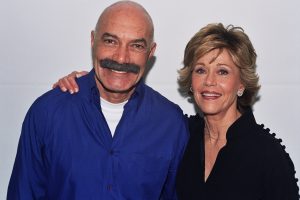Writer-director Quentin Tarantino once declared the 1980s as one of the worst periods for movies. That view has been seconded by enough critics, fans and film buffs to secure the perception of the decade as a hollow time for American cinema, particularly when held up against the glory days of the “New Hollywood” of the 1970s, with its remarkable run of highly personal, auteur-driven films.
The ‘80s did bring changes to the industry. The old film studios were increasingly taken over by multi-national conglomerates and run by corporate executives with little connection to film tradition. It was a time of high-concept pictures, expensive blockbusters, stories geared more to the tastes of younger audiences and (speaking of Blockbuster) the advent of home video.
Some of the great filmmakers of the 1970s renaissance (e.g., Scorsese, Coppola, De Palma, Spielberg) continued to make notable films into the ‘80s, while others (Altman, Friedkin, Ashby, Peckinpah) struggled to get new work produced.
But the 1980s also saw the rise of such singular, idiosyncratic directors as Joel and Ethan Coen and Spike Lee.
How can we dismiss a decade that saw the release of Raging Bull (1980), Blade Runner (1982), Blue Velvet (1986), Raising Arizona (1987) and Do the Right Thing (1989)?
TCM author John Malahy revisits this era of filmmaking in “Rewinding The ‘80s: Cinema Under the Influence of Music Videos, Action Stars, and a Cold War.” Malahy will co-host one-night showcase, handpicking a few notable featured films from his book, available where books are sold on October 7, to share with audiences.
Tootsie (1982)
At this point in his career, Sydney Pollack maintained creative control, having turned out acclaimed hits like They Shoot Horses, Don’t They? (1969), The Way We Were (1973) and Three Days of the Condor (1975). When he signed on to this picture, however, he encountered a phenomenon of the time—the increasing power of star actors, namely Dustin Hoffman, whose creative control of the decade-old script preceded Pollack’s. Few can argue that the clash of authority between these two willful talents made for a failure, but the on-set arguments, by-the-minute script changes and opposing visions of the story threatened to derail the film.
What came out of this contentious and lengthy (seven months) work was a comedy that is both delightfully offbeat and unique for its time. It must have been a winning high-concept elevator pitch: Out-of-work actor cross-dresses to get a plum role. Hoffman threw himself into the dual characters of Michael Dorsey, whose argumentative behavior overshadows his talent, and his female alter-ego Dorothy Michaels, a no-nonsense but sweet-natured Southerner. When Hoffman was dressed as Dorothy, he inhabited her completely on set, a joy to be around even between takes, so much so that Pollack, according to assistant director David McGiffert, learned to wait until the actor was in drag and far more amenable before discussing changes and contrary ideas.
Tootsie also had the advantage of exceptional supporting cast, including Bill Murray (whose roommate role kept expanding over the course of the shoot), Teri Garr and Jessica Lange, a Best Supporting Actress winner as Hoffman’s unlucky-in-love soap opera star love interest. Despite the combative production and a script that went through at least seven writers (not counting Hoffman and Pollack), it turned out to be a critically praised commercial hit, garnering multiple awards and a healthy box office that made it one of the year’s top earners.
Terms of Endearment (1983)
Behind-the-scenes disputes have been the norm in Hollywood since the beginning, but the ‘80s saw a rise in entertainment reporting that made production feuds fodder for public titillation. Shirley MacLaine and Debra Winger famously clashed during the making of this picture, but their frequent artistic and personal skirmishes only fueled their on-screen chemistry in this story of the fraught relationship between a mother and daughter over many years. Director James L. Brooks, best known before this for his work on television sitcoms like “The Mary Tyler Moore Show,” walked a fine line between sitcom and sober drama with remarkable ease, bringing novelist Larry McMurtry’s sharply observed characters to absorbing life.
In adapting the novel for the screen, Brooks added a character McMurtry had not created. Because the setting of the story is Houston, a major NASA center, he invented retired astronaut Garret Breedlove, a crass womanizer who ends up the unlikely love interest of MacLaine’s uptight Aurora Greenway. Brooks wrote the role with Burt Reynolds in mind. Reynolds later expressed regret over turning it down. The role went instead to Jack Nicholson, who brought his usual unpredictable energy to both his performance and the atmosphere on set. It turned out to be an inspired decision and a welcome shot in the arm for the production and the story.
The film got rave reviews and took home major awards and critical accolades. The picture also did very well in the burgeoning home video market, although Brooks remarked that when people saw it in the theater with the full energy of an audience, the laughs were plentiful, but when they watched it at home, they tended to focus more on the drama and the sadder elements of the story. Brooks always considered it a comedy and claimed MacLaine won the part because of her comic sensibility.
Working Girl (1988)
Hollywood has always been partial to fish-out-of-water comedies and Cinderella romances, and audiences got both from this story about an office worker from Staten Island who rises quickly up the corporate ladder and trades her crude blue-collar boyfriend for a successful investment broker. The heroine with “a head for business and a bod for sin” is played by Melanie Griffith, coming off the success of Body Double (1984) and Something Wild (1986), and the men in her life are Alec Baldwin and Harrison Ford, getting a chance to prove his romcom chops and sex appeal after gaining fame as an action star in the Star Wars and Indiana Jones series.
Mike Nichols was a star director by this time, midway into a career that already included Who’s Afraid of Virginia Woolf? (1966), The Graduate (1967) and Silkwood (1983). So, he carried some weight when he threatened to drop out if studio execs didn’t approve his casting of Griffith, who they felt couldn’t carry a picture on her own. To hedge their box-office bets, they brought Ford on board along with Sigourney Weaver as Griffith’s Wicked-Stepmother boss. Griffith was highly praised for showing acting skills that had been somewhat buried under her bombshell image. The role seems to be made for her. Her character is unappreciated and, except for her sexuality, overlooked. Griffith was smart enough to realize the similarities and talented enough to deliver on them. “Just because you don’t have the credentials that people say are necessary doesn’t mean you can’t do the job,” she told a reporter at the time of the film’s release.
Thief (1981)
If for no other reason, this film stands out as the debut of one of the most distinctive talents to emerge from the 1980s. Michael Mann wrote and directed this taut, atmospheric neo-noir heist movie with the style and sensibility he brought to his later crime thrillers Heat (1995) and Collateral (2004) already fully formed. Most notable is the look of the film (cinematography by Donald E. Thorin)—stark light and shadow that imbue scenes, especially those at night, with tension and a sense of danger. The visual style also adds to the shrouded motivations of the lead character, played by James Caan, a professional thief looking to make one last score before going straight. “I like to be emotionally available, but this guy is available to nothing,” Caan told The New York Times.
A successful crime thriller, one that takes viewers through the step-by-step process of pulling off an elaborate heist, has to be believable if audiences are going to immerse themselves and follow the action. Mann’s meticulous attention to detail, evident throughout his subsequent career, creates a fully fleshed-out world, depicting crime as a profession that requires dedication and skill. He pressed Caan into doing careful research and used actual former safecrackers, ex-cons and Chicago police to play supporting roles, some of them acting as technical advisers. This attention did not escape critic Roger Ebert, who praised the film’s intelligence. He also noted the complex, believable characters, making for an experience far richer and more compelling than just a mechanical depiction of a heist. “It’s a thriller with plausible people in it,” Ebert wrote. “How rare.”
On a par with the look of the movie, the sound is a major contributing factor to the overall atmosphere. Mann has become known for his use of cutting-edge music, and his debut features a score, composed and performed by the German electronic band Tangerine Dream, that amplifies the story’s tension and danger. True to Mann’s detailed approach, the music blends with actual diegetic sounds of the thieves at work. He took what in lesser hands could have been overlooked — e.g., the exact note made by a fire extinguisher blasting — and worked with Tangerine Dream to process sound effects into a musical theme.
Diner (1982)
Writer-director Barry Levinson’s feature debut was critical and commercial hit that virtually created a subgenre, a story set among friends, usually men, who hang out, argue over nonsense, air their romantic struggles without truly understanding them and make very little headway in life, love and professional success. But Diner is played for laughs, and a good bit of nostalgia, in its story of a group of guys in late 1950s Baltimore who, for all their posturing, are little boys barely holding on in an adult world.
The movie’s early appeal rested greatly on its ensemble cast, a who’s who of the decade’s up-and-coming talents: Steve Guttenberg, Tim Daly, Mickey Rourke, Kevin Bacon, Daniel Stern and Paul Reiser. (In her first credited big screen role, Ellen Barkin played the put-upon wife of the only married guy in the gang.) Most of the actors didn’t know each other when shooting began, so to help make them more convincing as longtime friends, Levinson shot all the scenes in the diner late in the production to give them time to get to know each other. He also allowed them to improvise some dialogue, lending their rambling conversations about food, music, sports and girls an air of authenticity. The world Levinson created from memories of his own younger life is comic, touching, often absurd and made all the more believable by the location shooting in his native Baltimore.
MGM panicked when they saw the movie, expecting to get something more like the crass, horny teen comedy Porky’s (1981). The studio was reluctant to release the film until they heard that some influential critics liked the picture.










